The Best Cooking Tips We Learned at the 2024 Food & Wine Classic in Aspen
These tricks and techniques from chefs like Maneet Chauhan, Tyler Florence, and Claudette Zepeda will change the way you cook at home.
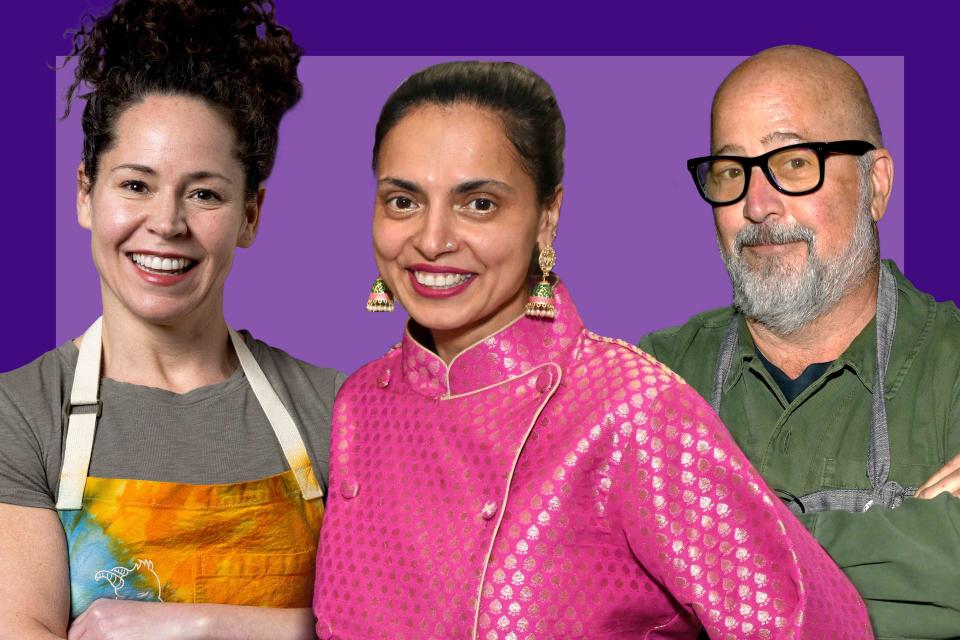
Food & Wine / Galdones Photography / Getty Images
The Food & Wine Classic in Aspen takes place just once a year (though you can still buy tickets for the Charleston Classic in September!), but we use the cooking tips we get from chefs all year long. Here are some of the best ones we learned this year.
How to make the best crab cakes
“Use 20 Saltines for every one pound of crab meat, crushed by hand — no more, no less!” says chef Andrew Zimmern. Also, no one likes a beige crab cake. When you’re making Zimmern’s Baltimore-Style Crab Cakes, allow them to get browned and caramelized on the outside.
Season everything
“Anytime you add another ingredient to the pot, add more flavor with a bit of salt, other seasonings, or herbs,” says Dook Chase, the executive chef of Dooky Chase’s and Chapter IV in New Orleans. “You want to always remember to build flavor while you are cooking.”
The secret ingredient for extra-crispy pakora
Nashville chef Maneet Chauhan adds a bit of rice flour to her vegetable pakora mix for super-crispy results. Try using it in the batter for other fried foods like Fried Cheese Curds and a classic Fish Fry.
Related: Second to Naan: How to Make Maneet Chauhan's Favorite Indian Breads at Home
Why you should preheat your tools when frying
“If when pulling fried foods out of oil, you find things sticking to your tools, try to preheat your metal tools in the oil first,” says Andrew Zimmern. To do this, dip your slotted spoon into the hot oil and hold it for a few seconds to allow it to come up in temperature. Zimmern also suggests cooling fried foods on metal racks, but you don’t need to get fancy. “I buy them for $8 from Amazon,” he says.
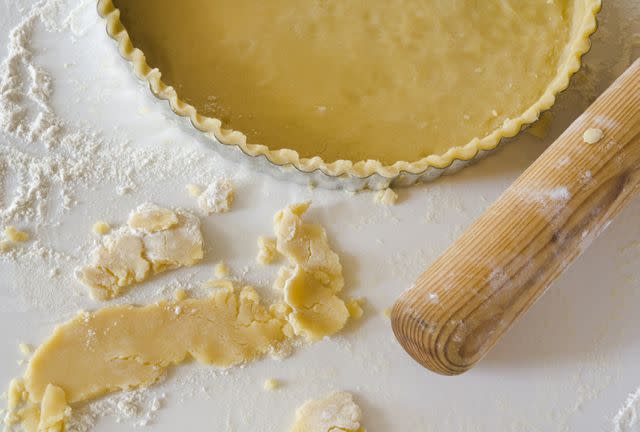
YinYang / Getty Images
Two doughs is better than one
If you’re already making dough for a pie or tart, why not make two, asks legendary pastry chef Claudia Fleming. Simply line another tart pan, cover it with plastic wrap, and put it in the freezer, where it will last for up to one month.
How to perfect caramel
Caramel is notoriously tricky to make, and cooks will often misjudge the color in the pot when cooking over gas, explains pastry chef Karen Demasco of Gramercy Tavern. Her solution: Dip a whisk into the caramel and hold it up against a white surface like a white wall or a white plate. “Induction [burners] are great for caramel thanks to their consistent high heat,” Demasco adds.
Related: Cook Caramel With Confidence With These Tips From Claudia Fleming and Karen DeMasco
Special K makes an unexpected snack mix
2011 F&W Best New Chef Stephanie Izard told us she uses the cereal-aisle fave to make a crunchy spice mix topping, along with butter and spices. Why? It adds crispy texture without deep-frying.
Think browned, not blackened
“Brown is the color of flavor,” says Andrew Zimmern. “You don’t want to blacken your food, you want to brown your food.”
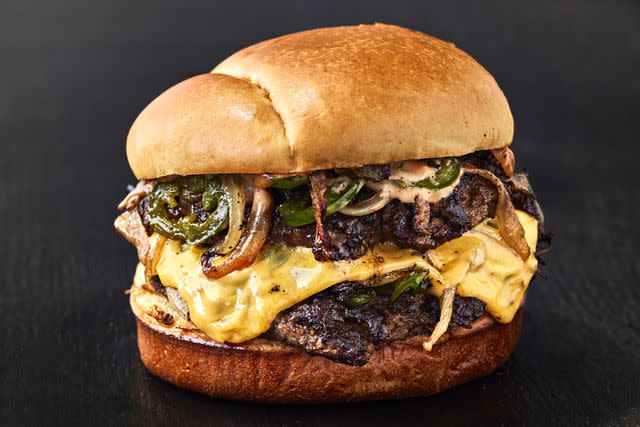
Victor Protasio / Food Styling by Margaret Monroe Dickey / Prop Styling by Christina Daley
The anatomy of a perfect burger
Chef Tyler Florence suggests using day-old brioche buns. The extra sturdiness will keep your burgers from falling apart when you eat them, he explains.
“Fat is flavor,” says Florence. At his San Francisco restaurant Miller + Lux, he uses 25 percent fat and 73 percent lean ground beef, along with two percent dry aged ground trim. “Don’t overmix your burger meat,” he adds.
Brie makes the best cheeseburger topping. Florence likes Cowgirl Creamery’s Brie-style Mt Tam cheese.
Related: Our 25 Best Burger Recipes
How to keep dough from sticking
Dough can get sticky, so Claudia Fleming advises rolling it between pieces of parchment paper. If it gets too soft, you can wrap it back up in parchment and place it in the freezer. Release the paper every couple of times so it doesn’t stick.
Grill marks are overrated
“Nobody cares about grill marks anymore,” says Tyler Florence. “They’re so ‘90s. I want my food browned and delicious.” Take the Grilled Italian Sausage with Apple Mustard and Giardiniera from his new cookbook American Grill — Florence says it’ll be just as delicious without grill marks.
Related: Tyler Florence Reveals His Secrets to Cooking the Best Steak
Use a humidifier when making fresh pasta dough in a dry environment
We saw this tip in action when Los Angeles chef Evan Funke set up humidifiers on stage to accommodate the dry air in Aspen. “You have to adjust the amount of hydration in your pasta dough depending on the humidity where you are,” he says. “The dough I make at my restaurants in Los Angeles is different from what I make in Las Vegas and Chicago.”
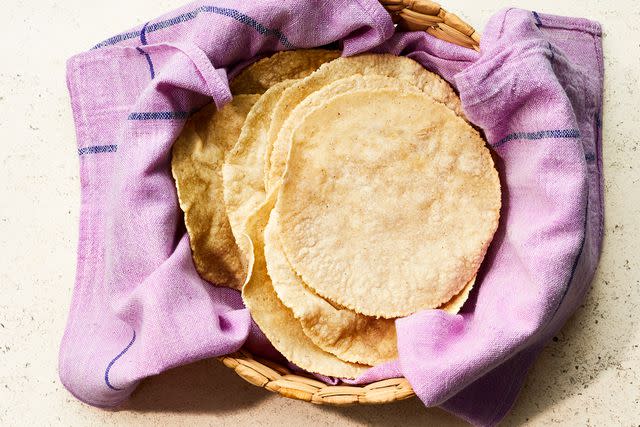
The best tortilla tips
Many tortilla presses come with pre-cut parchment paper to keep the tortillas from sticking to the press, but Claudette Zepeda, the San Diego-based chef behind Chispa Hospitality, recommends using a grocery produce bag — not a ziplock bag, which she says is too thick.
Spin the tortilla as you’re pressing to make sure it’s an even thinness.
Don’t always go off the recipes. If you see a lot of cracks, it means you need more water, says Zepeda. Factors like elevation will change the needs of your masa.
When you’re about to eat or use a tortilla, grab one from the middle of the pile instead of on top — the ones in the middle won’t be dry on one side.
Related: How to Use a Tortilla Press to Make Tortillas, According to an Award-Winning Chef
Cast-iron is your friend for smaller foods
Use a cast-iron pan on the grill for smaller foods like vegetables. “They’ll still get all the flavor and won’t be lost in the grates,” says Tyler Florence.
Don’t get stir-crazy
“You all play with your food too much,” says Andrew Zimmern. “There’s no need to stir all the time — it’s cooking all on its own.”
Pull your meat at this temperature for the juiciest chicken ever
Another tip from Tyler Florence: Purchase an instant-read thermometer and take your chicken off the heat at exactly 152°F. Carryover cooking will allow the chicken to rise to a safe temperature.
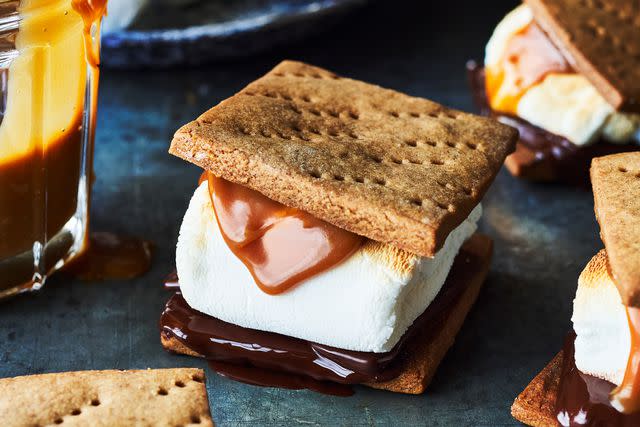
How to make a perfectly browned s’more
Tyler Florence uses large marshmallows and leaves them out overnight to dry to keep them from melting when he roasts them.
Let meat come to room temperature before cooking
You should always temper your meat — aka take it out of the fridge for at least 20 minutes — before putting it in something hot (like an oven or on a grill), says Claudette Zepeda. This allows the internal temperature of the meat to rise evenly for juicy, tender results.
Related: The Best Way to Store Meat in Your Fridge and Freezer
Don’t toss your cilantro stems…
“Always use cilantro stems when blending cilantro for a chutney, sauce, or salsa,” says Maneet Chauhan. “They give so much flavor, and the texture after blending gives the sauce a smooth texture.”
…or shrimp shells
“We cook with a lot of seafood in New Orleans, and I always use the leftover shells in sauces and soups — you get so much flavor from them,” says Meg Bickford, executive chef of iconic Crescent City restaurant Commander’s Palace. “I also add a touch of fish sauce to play up all the great flavors we get from the shrimp and crawfish shells.”
On that note, don’t toss anything
“Don’t throw anything away, ever,” says Andrew Zimmern. “There’s always a way to repurpose something.” We couldn’t agree more — try these editor-favorite recipes for reducing food waste.
For more Food & Wine news, make sure to sign up for our newsletter!
Read the original article on Food & Wine.

